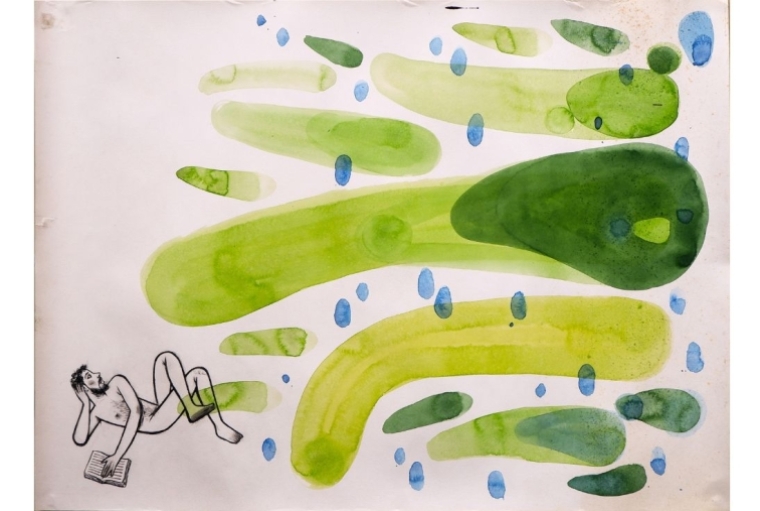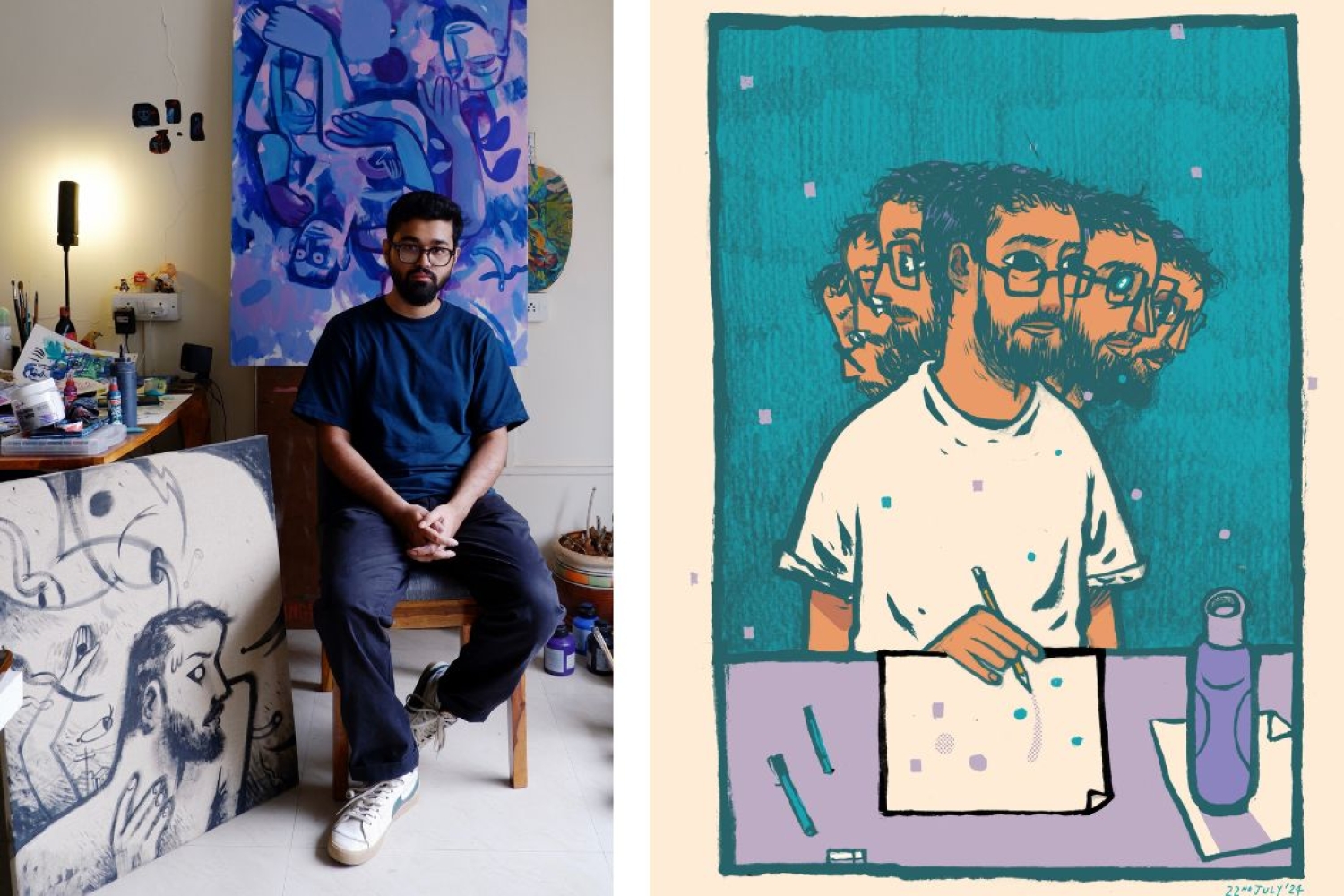

Hailing from Pune, Debangshu Moulik’s journey into graphic design and illustration is not merely a profession but a profound exploration of identity and expression. From childhood experiences that ignited his passion for art to his current multidisciplinary practice, Debangshu's work transcends traditional boundaries, merging comics, sculpture, and painting into a cohesive narrative. As he continues to redefine the artistic landscape, we delve into his creative evolution, influences, and the themes that drive his work.
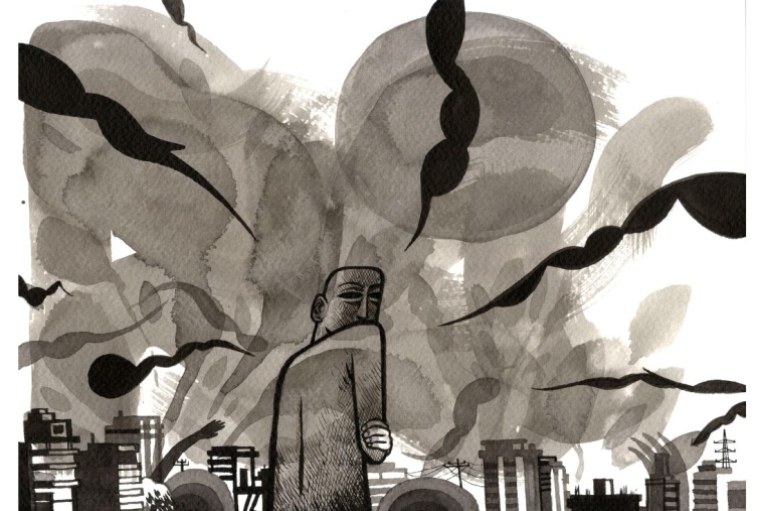
Artistic Journey
Debangshu’s journey into the world of graphic design and illustration began not just with a love for drawing, but as a way to communicate in a world that felt foreign to him. Growing up in Pune, where Marathi was the dominant language, he often found it challenging to connect with his peers. “I couldn't speak the language that most kids spoke here,” he recalls. “So I started pointing to fruit charts, trying to communicate through images.” This early experience sparked a fascination with visuals that has shaped his career ever since.
Evolution of Artistic Practice
Over the years, Debangshu’s art has evolved significantly. Initially focused on comics, he drew inspiration from cartoons and Tinkle comics, attempting to emulate the styles he admired. “As I grew, I dabbled in painting and sculpture, experimenting with various mediums and 3D software,” he explains. This constant exploration keeps his work fresh and engaging. “I always try to change it up so that I stay invested in my art. After all, creating five to six new drawings every day can get monotonous!”
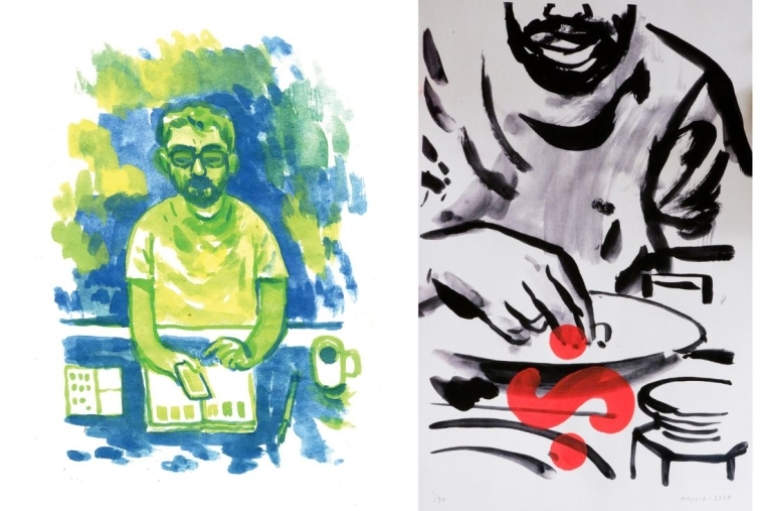
Influences and Inspirations
Throughout his artistic journey, Debangshu has been influenced by a diverse array of artists. From childhood encounters with comic book artists at conventions to studying the Bengal School of Art in college, his influences are eclectic. He cites inspirations ranging from classic comic artists like Ram Vairkar to contemporary figures such as Anand Radhakrishnan and Bhanu Pratap. “Anime and manga also played a significant role in my development. Satoshi Kon and Osamu Tezuka, for example, were pivotal in shaping my understanding of storytelling through visuals,” he shares. He recalls how prayer gatherings in his family inspired him to create characters using divine imagery mixed with influences from popular culture, like Dragon Ball Z. “It’s a jumble of experiences that has led me to where I am today.”
Creative Process
When it comes to his creative process, Debangshu approaches each discipline—be it comics, exhibitions, or paintings—through a unique lens. “My art exhibitions often mirror the structure of comic panels, bringing a fresh perspective to the physicality of each medium,” he explains. For him, the intersections of various forms of art allow for an enriching cross-pollination of ideas. His practice also includes daily journaling, which serves as a foundational step in generating ideas. “Just living life and reflecting on daily experiences provide a wealth of content for my artworks,” he notes.
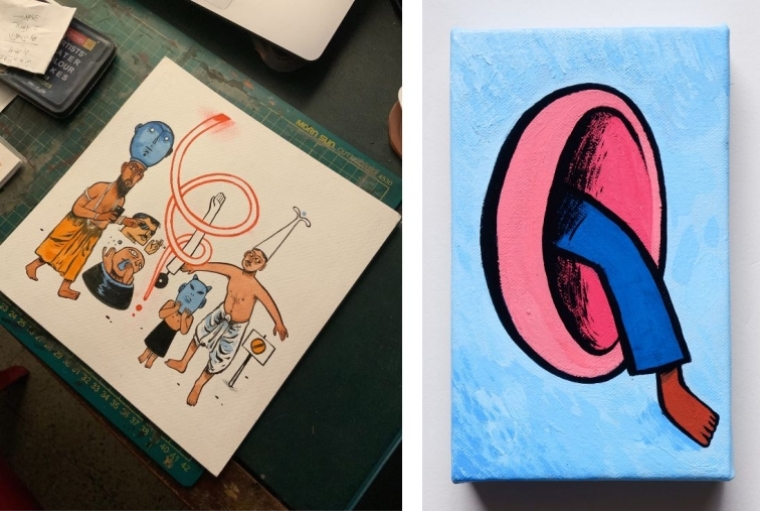
Color as a Narrative Tool
When it comes to color, Debangshu uses it strategically to evoke emotions. His understanding of color theory, influenced by a course from Pixar artists, helps him apply colors that align with the emotional tone of his work. “For commercial illustrations, I often use bright colors to visualize products effectively,” he explains. “In contrast, the emotional landscape of a piece might dictate a more subdued palette.”
Future Endeavors
Looking ahead, Debangshu is eager to expand his sculpture practice and is currently working on a 150-page graphic novel that encapsulates his experiences. “I’m also preparing for an exhibition in the first half of next year, so there's a lot on my plate,” he reveals. “I want to finish the graphic novel first before focusing on the paintings for the exhibition.”
Words Paridhi Badgotri
Date 25.10.2024
